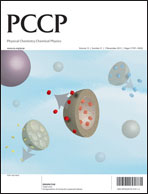Dual-functional hetero-structured TiO2 nanotrees composed of rutile trunks and anatase branches for improved performance of quantum dot-sensitized solar cells†
Abstract
We developed a two-step hydrothermal method to prepare hetero-structured TiO2 nanotree arrays on FTO substrates. This process included the deposition of rutile nanorod arrays with a length of about 2 μm as trunks at first and then the growth of the anatase nanosheets with the thickness of less than 10 nm standing on the rutile trunks through a dissolution-growth process. After being coated with CdS and CdSe quantum dots, these nanotrees were used as photoanodes in the quantum dot-sensitized solar cells (QDSSCs). It was found that the branches could enlarge the surface area of the anode, increase the amount of the deposited quantum dots, and thus improve the light absorption of the whole device. Moreover, the electron transport dynamics indicated that the phase junctions between the rutile trunks and anatase nanosheets could accelerate the electron transport in the QDSSCs. As a result, we got a conversion efficiency of ∼2.4% with the thickness of less than 2 μm, which was 50% higher than that in the nanorod array-based QDSSCs.


 Please wait while we load your content...
Please wait while we load your content...